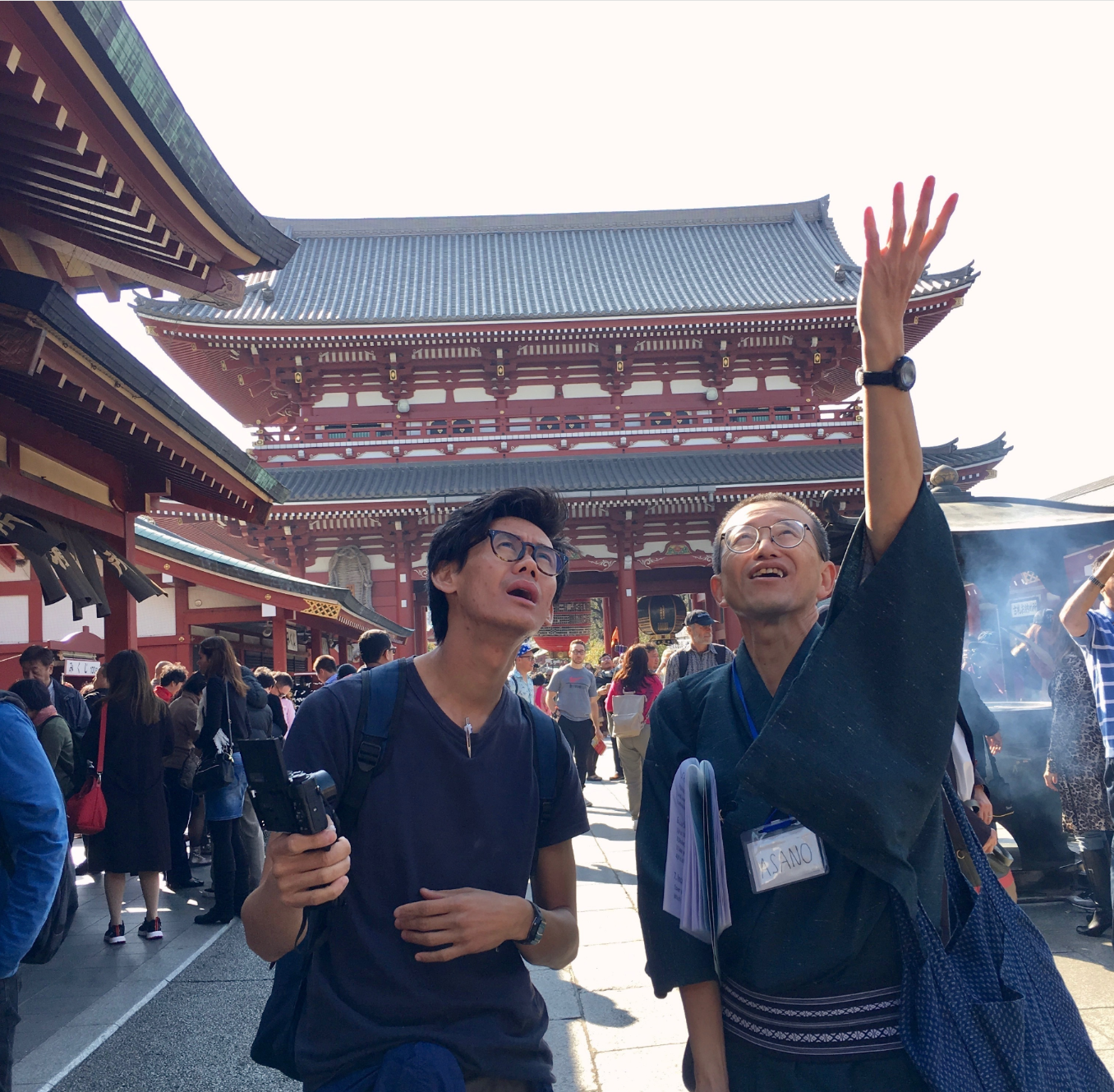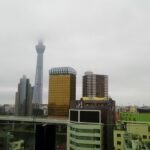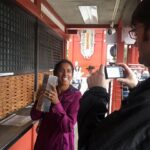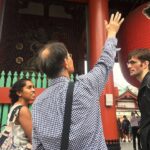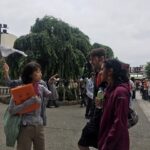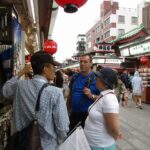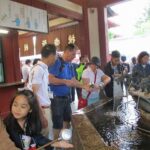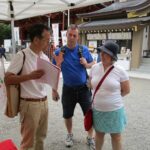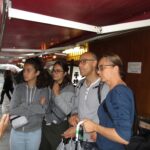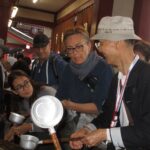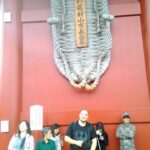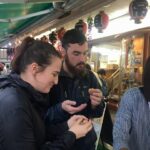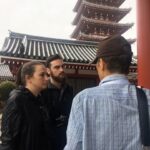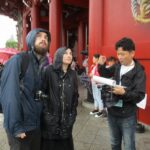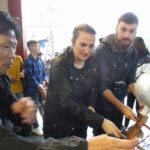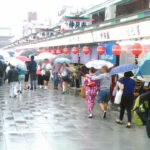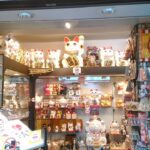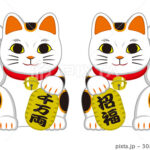Thank you for joining our Tokyo Free Walking Tour.
On the day of our two-guided tours, 10th of June, we welcomed 13 guests from, U.S.A. Australia, Canada, and Denmark.






A rainy and overcast weather condition prevailed and lasted the entire day all over Tokyo.
The sky was gloomy and gray, particularly during the day, in many parts of Tokyo, and one of the these places was Asakusa.
Overlooking the entire Asakusa district from the rooftop of the Asakusa Information Center, we saw Tokyo Skytree standing appealingly against the backdrop of a gray sky.
The top, covered by clouds, seemed invisible to the viewers, while the rest of its parts reflected the gray color of the cloudy sky.
It is a typical atmosphere that people experience especially during the wet season in Japan, which usually starts early in the month of June and lasts until the beginning of July.
Regardless of the circumstances, we welcomed 13 Asakusa enthusiasts in front of the Thunder Gate, the entrance to the Asakusa Buddhist Temple compound.
Starting from the distinct Buddhist temple gate, we eventually moved into the 250-meter long shopping street, called Nakamise street.
As we have introduced Nakamise Street on our previous blog post, the area and the items being sold in this shopping strip have rich histories and are a good conversation.
We normally go by some notable shops in the area and show our guests items and souvenirs. One of the these items is a cat-shaped ornament called Maneki Neko. Along with it, we’ll tell a story behind this eye-catching doll.
Maneki-neko, roughly translated as “Beckoning Cat”.
It is also called the “Welcoming Cat or Lucky Cat” in English.
As its name suggests, it is a cat-shaped ornament, which is believed to bring luck and prosperity to its owners. For that reason, this pretty cat is often displayed at the entrance of shops, restaurants, and other business spaces.
Normally, the Maneki-Neko is made of ceramic or plastic and comes in an array of colors– white, black, gold and, sometimes, red.
There are two types of these ornamental cats.
Some raise their right paws with making beckoning action and others do their left paws likewise.
It’s commonly believed that the right paw of these cats is raised to beckon for money, and the left paw is for people.
Those fortune cats are sold as souvenirs, and customers purchase the lucky cat in hopes of having favorable results and life successes.
Initially, Maneki-neko was said to be sold in the area of SensōJi Temple in Edo-era(between 1603 and 1868 ), then it was mentioned in a newspaper article and used as advertisement in Meiji-era(between 1868 and 1912)
As a result, it is one of the notable items in Japan.
However, exact origins of Maneki-Neko are still uncertain and only several folktales have been known.
@@@@@@@@@@@@@@@@@@@@@@@@@@@@@@@@@@@@@
We still have two times of our tour in line with the following time slots:
1st from 10:00 a.m. to 11:30 a.m.
2nd from 1:00 p.m. to 2:30 p.m.
Please come and join us at your earliest convenience.
(By Arac)

